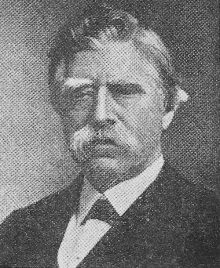|
April 1961 Radio-Electronics
 [Table of Contents] [Table of Contents]
Wax nostalgic about and learn from the history of early electronics.
See articles from Radio-Electronics,
published 1930-1988. All copyrights hereby acknowledged.
|
Prior to reading the April
1961 issue of Radio-Electronics magazine's "Inventors of Radio" article,
I don't recall ever having heard of
David Edward Hughes. Of course most people have
never heard of me, but then I haven't accomplished near as much as Mr. Hughes.
Per the article, Dave (if you'll permit the familiar reference) not only developed
a precursor to the teletype machine, but he also invented the first practical carbon
microphone. Author Bartlett claims, too, that Hughes described, based on an investigation
into induced currents due to the making and breaking of electrical contacts, the
principle of the coherer (the first widely used form of wireless signal detector).
Bartlett sums up by saying, "It has been said of Hughes' experiments in radio that
they 'were virtually a discovery of Hertzian waves before Hertz, of the coherer
before Branley and of wireless telegraphy before Marconi and others.'" Son of a
gun.
Inventors of Radio - David Edward Hughes

David Edward Hughes
By Dexter S. Bartlett
David Edward Hughes was born May 16, 1831, in London, England, but the family
emigrated to America when he was about 7 years old. In 1850, he became professor
of music at the College of Bardstown, Kentucky, and soon after of natural philosophy.
Hughes' first research was with wire telegraph apparatus, for which he invented
the polarized relay for more reliable action. Also, as early as 1855 he patented
a type-printing telegraph, which could handle 30 words per minute. The forerunner
of the modern teletype, it had means for synchronizing the transmitter and printer,
with provision for correcting sync with each word sent, plus many other features
used in today's equipment. By 1856, it was in use between New York and Boston and,
by 1862, in a limited way, throughout Europe. However, in those days labor was cheaper
than automation, so the Morse operators stayed at their keys.
Next, in 1878, he turned his research to the telephone and made a major breakthrough
with the first carbon microphone. Previously, Wheatstone, as far back as 1827, and
Reis, in 1861, had tried, producing instruments that would transmit only tones or
scratches. The Hughes microphone consisted of a bar of carbon on two supports of
the same material. The imperfect contacts were affected by sound waves and would
therefore transmit sound signals. He did not patent his microphone, believing it
to be a discovery rather than an invention. Among those who improved Hughes' invention
was Edison, who used carbon granules for his imperfect contacts, thus producing
our modern telephone transmitter.
In 1879, while working on his microphone, Hughes noticed a noise in his phones
when a current was interrupted in another coil a few feet away. In a letter to Sir
William Crookes, he wrote, "Further researches proved that an interrupted current
in any coil gave out such intense extra currents that the whole atmosphere, even
several rooms distant, would have a momentary charge which was received by my telephones,
even through obstacles such as walls."
Hughes used his imperfect-contact microphone as a detector. He discovered also
that a loose contact between metals was equally sensitive, but that the metals would
cohere after the passage of a wave, making the device useless. Thus Hughes discovered
- and discarded - the coherer 10 years before its invention by Brimley.
He staged a demonstration before members of the Royal Society, in which he transmitted
and received signals over a distance of 500 feet. One of the secretaries of the
society, Professor Stokes insisted that all the effects could be explained by induction,
and argued his point with such vigor as to convince the delegation. Discouraged
by the attitude of Professor Stokes, Hughes refrained from publishing the results
of his experiments. However, he continued them for some years, ceasing apparently
on the publication of the work of Hertz, which explained to him and the world the
true nature of the waves whose existence Professor Stokes had denied.
After his discouragement and the subsequent triumph of Hertz, Hughes maintained
a complete silence on his early experiments, relating them only after considerable
persuasion to the historian of telegraphy, J. J. Fahie, in a letter dated April
29, 1899.
In his later life, he invented the induction balance (commonly called the Hughes
balance), now used in metal locators and mine detectors. He also revised and organized
his many papers on electricity and magnetism. Dying in 1900 in England, where he
had spent the latter part of his life, he left a considerable fortune, which, according
to his will, was divided among such projects as the establishment of scholarships
and prizes in physical science, as well as donations to four London hospitals.
It has been said of Hughes' experiments in radio that they "were virtually a
discovery of Hertzian waves before Hertz, of the coherer before Branley and of wireless
telegraphy before Marconi and others."
References
Encyclopaedia Britannica, 11th Edition.
George Prescott, Electricity and the Electric Telegraph, 1882.
Orrin Dunlap, Radio's 100 Men of Science, 1944. J. J. Fahie, History of Wireless
Telegraphy, 1902. Cyclopedia of Applied Electricity, 1911.
Posted May 17, 2023
|










